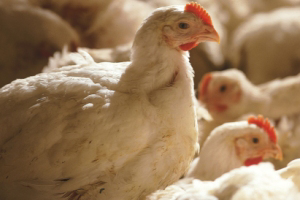Rabobank: 10 rules for thriving in the EU poultry industry

A recent report from Rabobank has published its top 10 golden rules for winners in the EU poultry industry. Rabobank believes that the ’10 Golden Rules for Winners’ model could help individual companies to position themselves in this changing industry landscape and to remain competitive in the future. This model could help individual companies to come up with a road map which they can further develop in the next five to ten years.
The EU poultry industry has been facing a turbulent market environment since 2006, with high and volatile feed costs, along with weak pricing power as a result of a weak macroeconomic environment. In addition, the industry—particularly in northwestern Europe—has been receiving ongoing criticism by NGOs over animal welfare and sustainability issues. Both national and European authorities but also the industry themselves have raising the bar on regulations, requiring a more sustainable and animal welfare-friendly product. This has further pressured the financial sustainability of the sector: costs are increasing at a time when market conditions do not permit these costs to be passed on to the consumer.
Significant investments and strategic repositioning
The emerging challenge for companies active in the western European poultry industry will be to adjust their strategy and business models. They need to acclimatise to a new market reality with a vocal and effective animal welfare lobby, a structurally weak economic environment, ongoing volatile input prices and a stronger and more savvy and price-driven customer base. This new reality requires a strategic repositioning of individual companies and significant investments.
The 10 golden rules
Figure 1: Ten golden rules for winners in the EU poultry industry
| 1 | The customer is king. Invest in market intelligence and product development. |
| 2 | Be the category captain. Invest in #1 positions as the preferred supplier of winning supermarkets, QSRs and food companies. |
| 3 | Consolidate your market, think outside country lines with a fresh 1,000 km sales radius as base. |
| 4 | Scale up or find a niche. The middle segment will disappear and companies will need to choose. |
| 5 | Optimal efficiency of the whole value chain is more important than ever. |
| 6 | Improve your value chain model to fit the new market reality. |
| 7 | Participate in social debate and be prepared for NGO pressure. |
| 8 | Optimise the value of individual cuts and offal streams to increase revenues and profitability. |
| 9 | Exploit your industry and client knowledge, and follow your customers. Expand in new markets. |
| 10 | Reconsider your capital structure. Family ownership has been the dominant model, but does it fit with future challenges? |
| Source: Rabobank, 2015 |
The more in-depth report can be viewed here.





![Birthe Steenberg, AVEC’s Secretary General: “Our [poultry] sector operates under the highest standards of animal welfare, biosecurity and sustainability in the world. Photo: Canva](https://www.poultryworld.net/app/uploads/2024/10/Untitled-design-79-389x260.jpeg)







